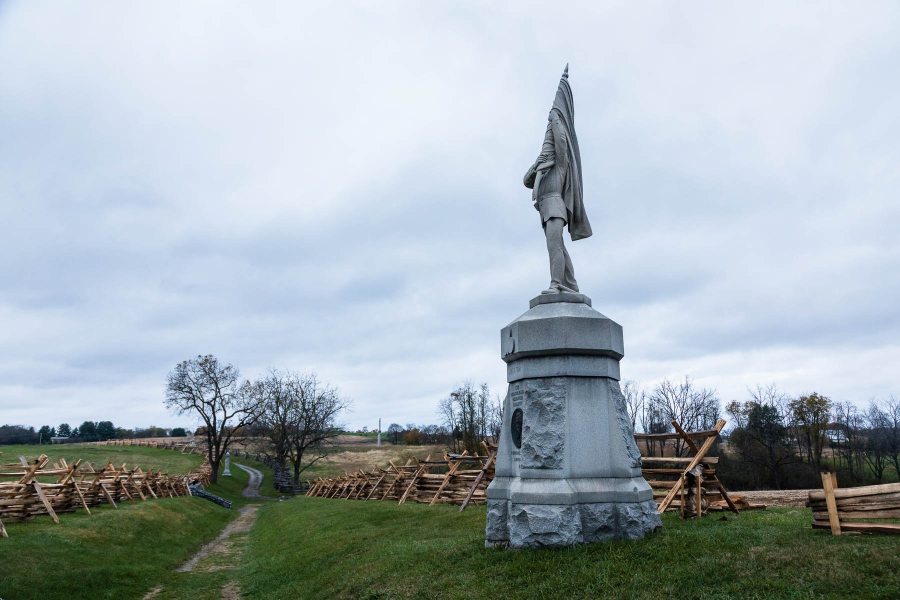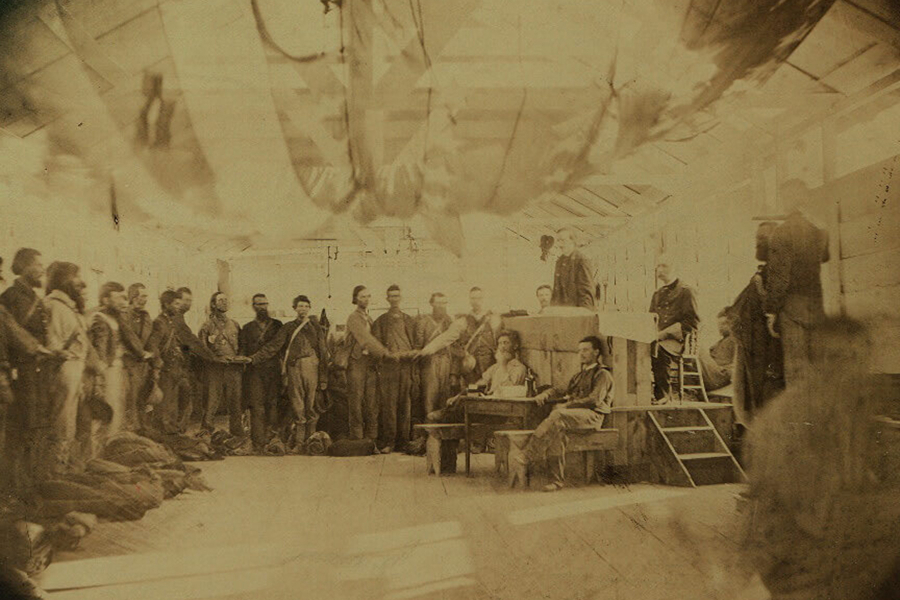Civil War
Read about how the Bay and its rivers and streams played a pivotal role in many Civil War battles—both on land and water.

From the beginning of the Civil War, the Chesapeake Bay was one of the most important water bodies in America. The capitals of both the Confederacy and the United States sat next to Bay rivers: Richmond, Virginia, on the James River, and Washington, D.C., on the Potomac River.
Because of its close distance to both capitals, the Bay and its rivers played an important role in many Civil War battles. Huge armies prowled around Maryland and Virginia throughout the entire war. Access to the Bay meant the ability to receive shipped goods, quickly transport troops from one point to another and threaten the enemy with strikes deep into their territory.
The Potomac Flotilla
In May of 1861, federal authorities created a "flying flotilla” to patrol the Chesapeake Bay and its rivers. Dubbed the Potomac Flotilla, the fleet of six ships, steamers and barges was responsible for the safety of travel and supplies on the Potomac River and the upper Chesapeake Bay.
The Potomac Flotilla had its hands full keeping raiders and smugglers in check. When General Grant moved through Virginia during his 1864 Overland Campaign, the Flotilla removed Confederate mines from the Rappahannock River. This allowed the Union army to use Fredericksburg as a secure base for supplies. The Flotilla also extracted gunpowder from the mines for Union troops to use in the field.
The Potomac Flotilla provided invaluable security to the U.S. capital. By 1864, it helped drive the Confederate Navy almost completely out of the Bay.
Ironclads
The Chesapeake Bay was the setting for one of the most important naval battles in history. In March of 1862, the first ironclads CSS Virginia and USS Monitor fought to a bloody standstill in the waters off Hampton Roads, Virginia.
After four hours of brutal fighting, the battle ended in a draw. Monitor prevented Virginia from destroying the rest of the Union fleet stationed at Hampton Roads. This gave the Union a moral victory.
The squat, iron-encased ships, which could withstand nearly all attacks, ushered in a new era in naval engineering. Winston Churchill wrote in his History of the English-Speaking Peoples, “The combat of the Merrimac [Virginia] and Monitor made the greatest change in sea-fighting since cannon fired by gunpowder had been mounted on ships.”
The USS Monitor sunk in rough seas off the coast of Cape Hatteras on December 29th, 1862. The intact wreckage was located in 1973. The Monitor’s gun turret is now on display at The Mariners' Museum in Newport News, Virginia.
The Peninsula Campaign
In March and April of 1862, the Union Army of the Potomac traveled down the Bay from Washington, D.C., to the York-James peninsula for an attempt on Richmond. The 112,000-man army—the largest ever assembled in North America—used nearly 400 vessels of every size and stature. Along with the troops, thousands of horses, cattle, wagons, ambulances and artillery pieces traveled on the voyage.
The Union Army landed at Newport News and Fort Monroe, Virginia – both Union outposts – and began its assault up the peninsula. By late June, the Union Army advanced to within six miles of Richmond. However, during a series of bloody clashes known as the Seven Days Battle, Confederate forces pushed back the Union advance.
In August, Lincoln ordered the Army of the Potomac back to Washington, D.C. The campaign for Richmond came to a quiet close.
Point Lookout
The prison camp at Point Lookout is one of the darkest chapters in Chesapeake Bay history. In July of 1863, the federal government started housing many of the thousands of rebels captured in the Battle of Gettysburg at Camp Hammond—Point Lookout’s official name.

Prisoners at the camp were kept in the “bull pen”: a 1,000-square-foot area surrounded by a 14-foot-high fence with guard posts. The prisoners were given only thin tents for shelter. The tents offered little protection from the extreme weather on the unprotected peninsula. When high tide came, the low-lying bull pen would flood, often creating knee-deep mud and swamp-like conditions.
The camp's prisoner population ballooned from 9,153 in December of 1863 to about 20,000 by June of 1865—more than double the number the camp was designed to hold.
Supplies at the camp were stretched thin. There would often be 16 or more men to a single 15-square-foot tent. Three or more men would share a single blanket.
The cramped conditions made tempers shorter than ever. There were several instances of violence between guards and prisoners. Mosquitoes carried malaria and typhoid fever into the camps, and chronic diarrhea, scurvy and other diseases ran rampant.
The death toll began to rise during the summer of 1864. In May of 1865—one month after the fall of Richmond and the end of the war—324 men died in the camp.
There is no reliable count of the total number of men who died while imprisoned at Point Lookout. Nearly 4,000 men are buried in the camp cemetery, about eight percent of the more than 50,000 men who passed through the camp. But the practice of burying many of the dead in mass graves, as well as poor record-keeping at the prison, has led some to claim that this figure should be much higher.
